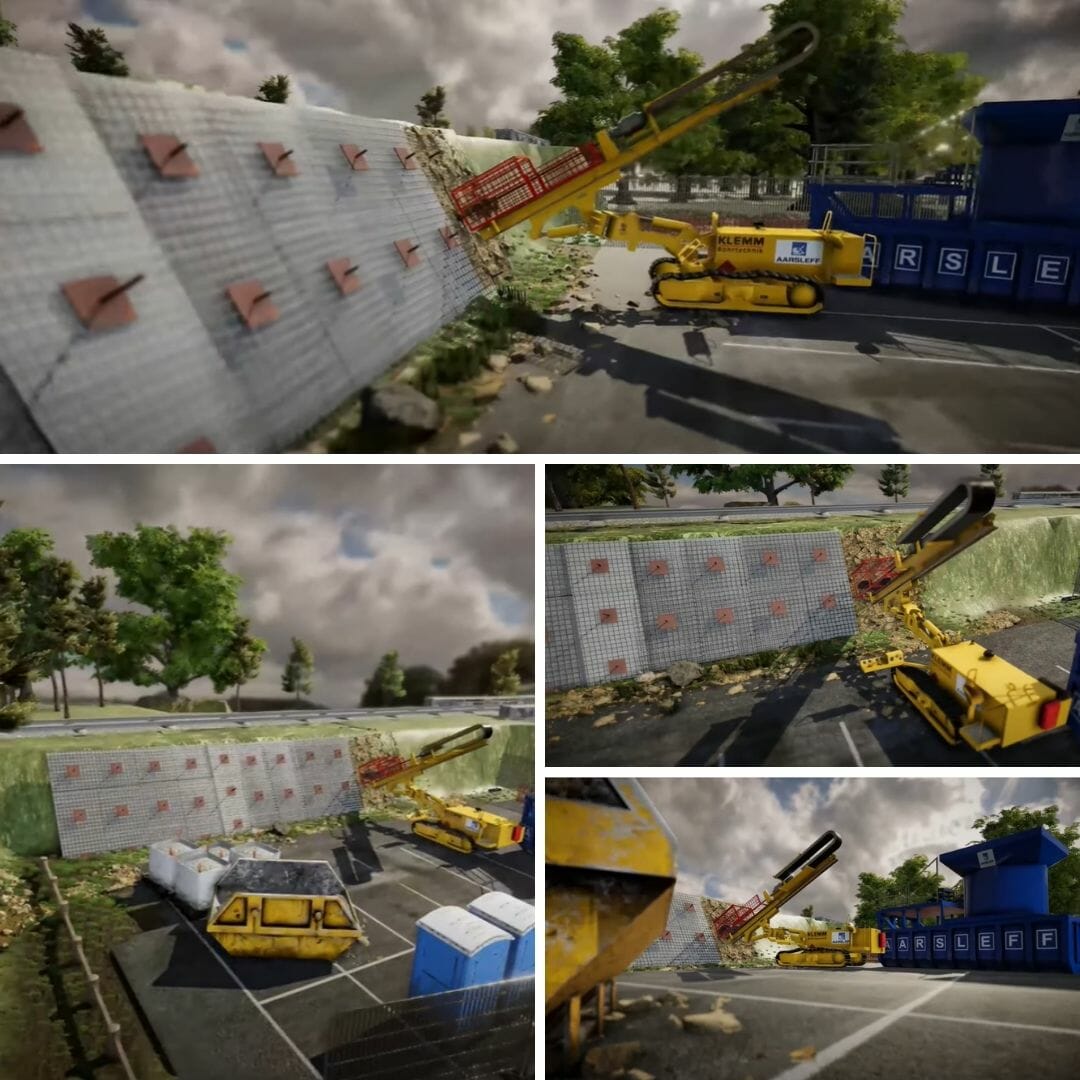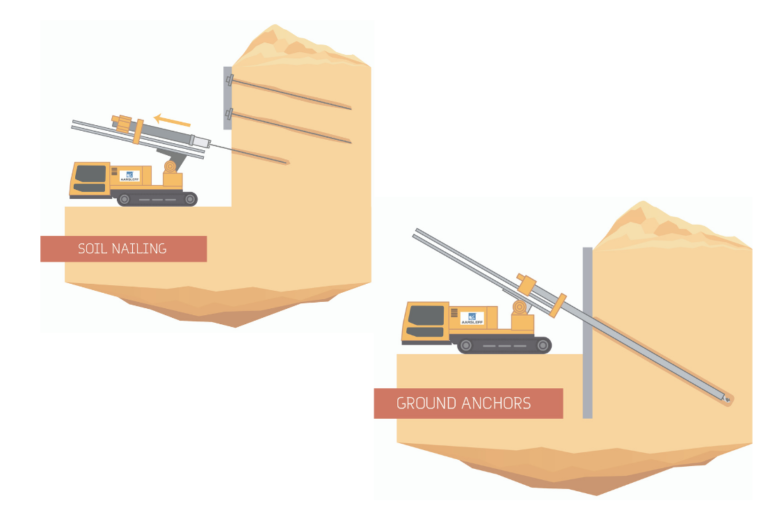Solving the three main queries you have about using Soil Nails
Categories:
Company News
Soil Nails are used to provide cost-effective short and long-term stabilisation for roadway cut excavations, tidal areas, landfill caps, dams, basements, slope stabilisation or retaining wall support, or for emergency works following a riverbank collapse or landslide.
Soil nails provide long term stability to existing concrete structures without demolition and rebuilding.
In the following article, we answer the three main queries asked by building contractors looking to use Soil Nails as part of their project:
Are they cost-effective?
Yes. The greatest advantage of soil nail walls is their cost-effectiveness over other alternatives. Soil nails are rapidly installed and require little space to manoeuvre, therefore not only does a team need less time on-site to install – depending on the works – other disciplines can continue to work and keep the overall project moving.

Soil Nails installed for a new IKEA store car park in Exeter, Devon (commercial)
How are Soil nails installed?
- An excavation is started to expose a soil face – typically in a top-down manner. Excavation is done to a depth for which the face of the excavation can remain unsupported for some time.
- Small diameter holes (typically 100-300mm) are drilling along the facing in a predetermined sequence to specific length and inclination, most commonly in the horizontal spacing of 1-2m between each nail.
- Steel bars are then inserted in the predrilled holes and filled with clean cement grout (the migration of water towards excavation should be prevented).
- A temporary shotcrete facing is applied, typically 75-100mm thick. This will protect the excavated face and fill cracks and voids in the face too.
- The shotcrete can even be textured to resemble local geology.
- The next level is excavated and steps 1-4 are repeated.
- A permanent wall facing is applied, typically 150-300mm thick. It is applied in layers.

Sunderland Strategic Transport Corridor, Tyne and Wear
Download our case study: UK’s Largest soil nail wall – The Sunderland Strategic Transport Corridor
What are the main differences between ground anchors and soil nails?
When conventional soil nailing construction procedures are used, soil nail walls are much more economical than concrete gravity walls as well as more cost-effective than ground anchor walls.
Ground anchor and soil nail retaining systems are both designed to stabilise and support natural and engineered structures and to restrain their movement using tension-resisting elements however there are some key differences.
Soil Nails are typically grouted bars that may or may not have double corrosion protection. Often, the tendon is designed to be either tabular (tubular) or solid that transfers tension forces into the ground. Otherwise known as pre-tensioned tendons. Whereas ground anchors are post-tensioned tendons that transfer tension from the unstable exterior to the underlying interior rock mass; hence, providing substantial reinforcement.

Still have questions? You can discover more in our video on Soil Nails: Video
Or you can speak directly to an expert, call 01636611140 or send an email Ashleycarter@aarsleff.co.uk
The Latest. News, podcasts & projects
Join our mailing list






